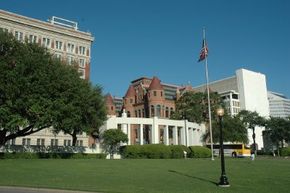In the darkest days of the Great Depression, the U.S. government stepped in to assist the needy and get the economy started again. Perhaps the widest-ranging and most productive New Deal measure was the Works Progress Administration. This group provided more than $10 billion in federal funds from 1935 through the early 1940s, employing millions of people in hundreds of thousands of jobs. Here are some of the most notable projects.
Advertisement
